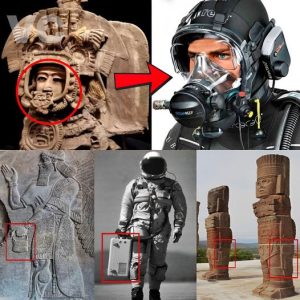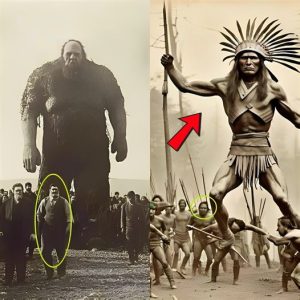In a groundbreaking archaeological find, the discovery of a medieval giant’s skull on the Turkish shore has sparked immense curiosity and debate among historians and scientists alike. This extraordinary find, coupled with evidence of death by spears, provides a rare glimpse into the life and death of a giant from centuries past. As researchers delve deeper into the context and significance of this discovery, they hope to uncover new insights about medieval societies and their interactions with such enigmatic individuals.

 Discovery and Initial Analysis
Discovery and Initial Analysis
The skull, unearthed along the Turkish coastline, has been identified as belonging to an individual of extraordinary size, earning the moniker of a “giant.” Initial measurements suggest that this person would have stood significantly taller than the average medieval human, leading researchers to speculate on possible conditions like gigantism that could have contributed to such stature. The presence of multiple spear wounds on the skull indicates a violent death, suggesting the giant might have been involved in a conflict or hunted down due to his imposing presence.
Historical Context and Significance
Medieval Europe and Asia were periods of significant upheaval, characterized by frequent battles and territorial disputes. The discovery of a giant’s skull with evidence of death by spears can provide valuable insights into the nature of warfare and societal attitudes towards individuals of unusual size during this period. Giants in medieval lore were often depicted as both revered and feared, sometimes seen as divine beings or formidable foes.
This find might correlate with historical accounts and folklore that mention giants, blending myth with reality. The analysis of the spear wounds and their placement could reveal tactical approaches used in medieval combat, especially against larger-than-life adversaries. Moreover, studying the skull’s features can help reconstruct the appearance and possibly the health conditions of such individuals, adding a tangible dimension to historical narratives.
Implications for Modern Understanding
The discovery holds substantial implications for our understanding of medieval societies. It challenges modern perceptions of historical accuracy in folklore and offers a physical testament to the legends passed down through generations. By examining the giant’s skull, researchers can explore the intersection of myth and reality, shedding light on how medieval people viewed and interacted with those who differed significantly from the norm.
Additionally, this find encourages a reevaluation of medical conditions like gigantism in historical contexts, providing a clearer picture of how such conditions were perceived and treated in the past. The evidence of a violent death also opens discussions on the nature of conflict and the social dynamics of the medieval era, particularly concerning those who stood out due to their physical attributes.
The discovery of the medieval giant’s skull on the Turkish shore is a remarkable archaeological find that offers a unique window into the past. With evidence of death by spears, this discovery not only captivates the imagination but also promises to enrich our understanding of medieval societies, their conflicts, and their myths. As researchers continue to analyze this extraordinary find, the giant’s skull is poised to become a key piece in the puzzle of human history, blending the lines between legend and reality.





